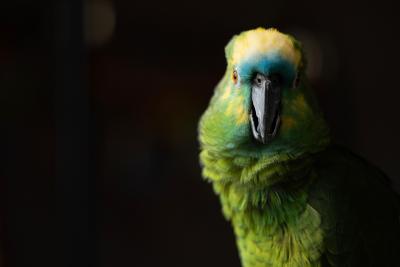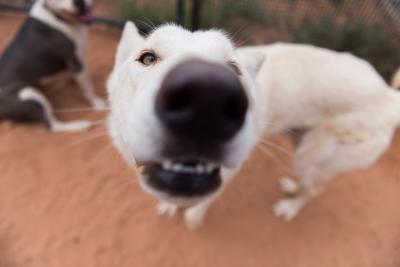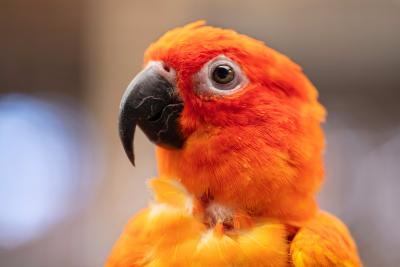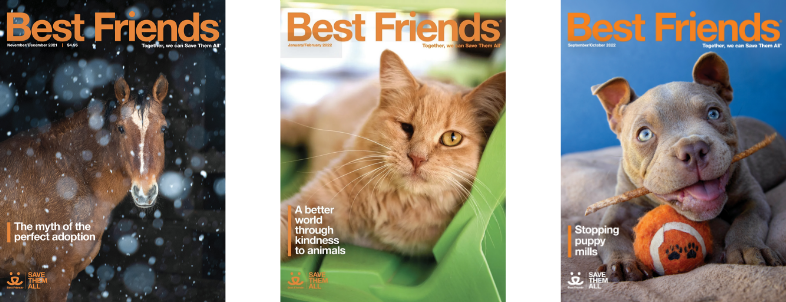The nose knows

If I were to tell you that dogs use their noses as the primary way to explore the world around them, this would almost certainly not be news to you. If I were to drop in a few fun facts about how Fido’s nose is a gazillion times more sensitive than yours (probably about 100,000 times, according to most experts), that probably wouldn’t surprise you either.
But think about it this way: You walk into a friend’s house, a waiting room, a store, perhaps a bus. You look around and see a couple of people. Then your dog walks in. She knows immediately not only who is in the room now, but who and what was there an hour ago, a day ago, maybe a month ago. She knows what they had for lunch, whether they were healthy or perhaps anxious, where they’d been earlier in the day, where they sat, what else they did, and altogether more about them than you or I will ever know.
When you consider the implications of that and begin to play out in your mind how dogs perceive the world around them — such as what they learn from a simple walk around the block — it becomes truly astonishing. And now consider that the same is true for every species, each of which has a unique set of sensory abilities. The animals’ perception of the world is guided by senses that are simply not available to us, giving them an experience of the world that is quite different from our own.
Overlapping or parallel worlds
Back in the 1970s, philosopher Thomas Nagel wrote a paper about consciousness titled “What Is It Like to Be a Bat?” Nagel’s conclusion was that we can never truly know what it’s like because our sensory systems are so different from theirs. It’s hard enough, after all, to know what it’s like to be another human — even one we’re very close to.
Even so, over the past decade, we’ve been learning more than ever about how our fellow animals experience their environment. In his latest book, An Immense World: How Animal Senses Reveal the Hidden Realms Around Us, journalist Ed Yong shows us around. Writing about the difference between the way we humans predominantly experience the world (through sight) and the way dogs do (through smell), Yong notes that “unlike light, which always moves in a straight line, smells diffuse and seep, flood and swirl. … Smells linger in a way that light does not, revealing history.”
Yong refers to this very different sensory environment as the dog’s “umwelt” — a German term that refers to our perceptual world. “A multitude of creatures could be standing in the same physical space and have completely different umwelten,” he explains. “Earth teems with sights and textures, sounds and vibrations, smells and tastes, electric and magnetic fields. But every animal can only tap into a small fraction of reality’s fullness. Each is enclosed within its own unique sensory bubble, perceiving but a tiny sliver of an immense world.”
[Dog Nose Work: Scent Training Sport for Dogs]
So, while we all occupy the same physical world, our experience is more like one of overlapping or maybe parallel worlds.
Even in a world of sight, our human umwelt can be very different from that of other animals. Try to imagine how birds perceive the world: While our human eyes are always looking at what’s in front of us, most birds have eyes on the sides of their heads. “A mallard duck’s visual field is completely panoramic,” Yong explains. “When flying, it sees the world simultaneously moving toward it and away from it.” Or as bird expert Graham Martin has described it: “The human visual world is in front, and humans move into it. The avian world is around, and birds move through it.”
Perhaps even more unimaginable is the umwelt of a jumping spider with her eight eyes: one set tracking movements that inform a second set as to where to look to get more detail, another set looking to the side, and yet another keeping an eye on what’s going on behind her.
Many animals barely use their eyes at all. Some animals who live underground have given them up altogether, replacing their eyes’ function with a highly enhanced sense of touch. For others, such as bats, sight acts as more of a supplementary sense. Bats may not be “as blind as a bat,” but they rely mostly on another sense: echolocation. As do dolphins, orcas (who are the largest dolphins) and sperm whales.

Beyond our five senses
Denise Herzing has been studying communication among spotted dolphins in Bahamian waters for more than 30 years. In her book Dolphin Diaries, she writes about the relationships she has developed with a particular pod, gaining their trust over the decades by learning dolphin customs and etiquette and observing them. “Even though I am committed to studying and understanding the dolphins scientifically,” she writes, “I have no problem also feeling like they are friends.” As a result, when her team returns for four months each year, the dolphins always greet them joyfully.
Or almost always. There was one occasion when the dolphins would not come near the boat. The crew was nonplussed. And then they discovered that one of their shipmates had died in his bunk during a nap. As the boat returned to port with the deceased man, the dolphins followed from a distance. Only when he had been taken ashore and the boat was back in their home waters did the dolphins greet the crew as they usually did. What had the dolphins sensed, and how? Could their echolocation have told them that one of the team no longer had a heartbeat? Herzing speculates that perhaps they have yet another sensory system that we humans know nothing about.
Recent studies have shown that while we humans have a neural pathway that goes (as you would expect) from each ear to the auditory center of our brain, dolphins have two neural pathways from each ear: one to the auditory center and the other to an area close to the visual center. What must that be like? And might dogs be experiencing something similar now that we know, from a study published in 2022, that dogs’ sense of smell is also integrated with their vision? (Try to imagine, too, what it must be like for a homeless dog entering a busy shelter and experiencing the presence of dozens, maybe hundreds, of stressed dogs who have come and gone in recent weeks.)
[Enrichment for Dogs in Shelters]
The ways by which some animals perceive their world extend beyond our proverbial five senses to include the sensing of electric and magnetic fields. Electricity is to knife fish and elephant fish what echoes are to bats, smells are to dogs, and light is to humans. So, for example, while we have had to learn to use compasses to find our way home, sea turtles and songbirds have, for millions of years, used a built-in compass to guide their migrations. And when it comes to being an octopus, we’re talking about an animal who effectively has a brain in each of her arms. “Even the 300 suckers on each arm are somewhat independent,” Yong writes. “Its sensations of taste and touch are probably inextricably fused.”

The ethics and limits of research
All these insights are fascinating, for sure. But in some cases, the research that’s involved also raises questions related to our values. When Yong discusses how different animals experience pain, he notes the continuing debate over whether fish feel pain, despite increasingly clear evidence that they do. “When we ask if animals can feel pain,” he writes, “we’re asking less about the animals themselves, and more about what we can do to them. That attitude limits our understanding of what animals actually sense.”
It also limits our relationship to them. And that’s why a growing number of scientists are saying we’ve learned enough to know the experience of life for another animal is as rich, as deep, and as meaningful to them as ours is to us — and that it is therefore time to bring an end to invasive, intrusive research on them.
This is not only an ethical issue. Treating animals as research subjects in a controlled environment inevitably limits what we can learn about them. Certainly, I can know a lot about you and your experience of life by examining your bones, your brain and your neural pathways. And this is obviously very helpful if I’m a doctor. But if I want to know who you are as a person, I need to know about you — and about myself — in other ways.
We humans love to learn about our world. But how we learn inevitably defines what we will learn. For scientists like Denise Herzing, her motto, “In their world, on their terms,” rules out experimenting on captive animals. But eliminating that approach has also opened the door to a world of knowledge that is richer and deeper and leads to a more meaningful relationship with the animals themselves.
Toward the end of his book, Yong quotes 19th-century naturalist Henry Beston, who famously noted that our fellow animals are “gifted with the extension of the senses we have lost or never attained, living by voices we shall never hear. They are not brethren, they are not underlings: they are other nations, caught with ourselves in the net of life and time, fellow prisoners of the splendor and travail of the earth.”
Beston’s words speak to the understanding that while we cannot share in every experience of our fellow animals, we can all share in the one that is most fundamental: the experience of life itself. And this, in turn, offers us the potential for a relationship of mutuality, of understanding and, in today’s troubled times, of true empathy through an awareness of fellow suffering.
While we may never know exactly what it’s like to be a bat, we can certainly experience and appreciate the “travail” of the bats, the octopuses, the dolphins and all the other animals with whom we share the Earth. And to that extent, we can indeed know what it’s like to be one of them.
Michael Mountain is co-founder of the Whale Sanctuary Project, which is working to bring an end to keeping whales and dolphins in captivity. He is also one of the founders of Best Friends and the former editor of this magazine.

This article was originally published in the January/February 2023 issue of Best Friends magazine. Want more good news? Become a member and get stories like this six times a year.
